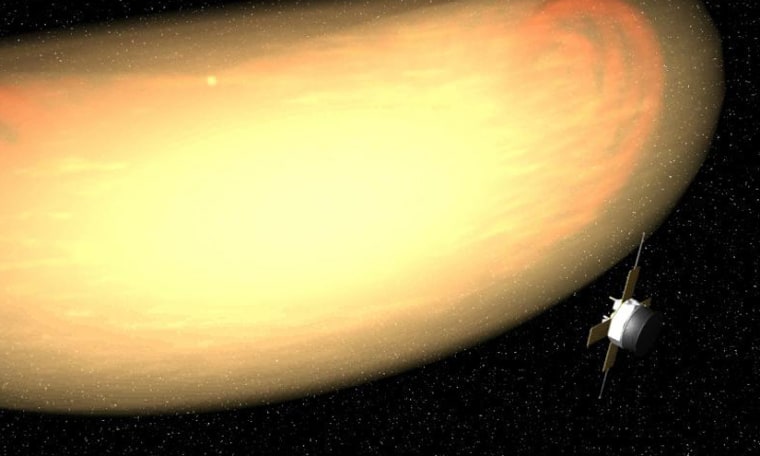Every time a giant solar storm — like the one that blasted by Earth earlier this week — rushes past NASA's Advanced Composition Explorer satellite, scientists at NOAA's space weather forecasting branch cringe.
The satellite, nicknamed ACE, provides the only advance notice of incoming high-energy particles from the sun which can wreak havoc on radio, GPS and satellite communications that are now embedded in modern life.
NEWS: As Sunstorm Zaps Earth, Planes Diverted
Launched in 1997, ACE gives forecasters advance notice if a storm is headed toward Earth. Its measurements of solar wind strength, magnetic fields and speed were key to forecasters' assessments Thursday that Earth would be spared a direct hit from a geomagnetic storm that left the sun on Tuesday.
But how much longer ACE will last is anyone's guess.
"It would be a very bad day for us if that spacecraft was not working," William Murtagh, program coordinator for NOAA's Space Weather Prediction Center in Boulder, Colo., told Discovery News.
"When an eruption occurs on the sun, there are still quite a few question marks as to if it's going to hit the Earth and when it's going to hit the Earth," Murtagh said.
Until the sun's free-flying and highly energetic outbursts, known as coronal mass ejections, hit the ACE spacecraft, forecasters don't know the orientation of their embedded magnetic fields. Depending on the polarity, or alignment, Earth's magnetic shield will either peel away, giving the highly charged particles more freedom to disturb electrically sensitive equipment and communications, or rebuff the particles, such as what happened during this week's outburst.
BIG PIC: Spectacular Aurorae Erupt Over Norway
Stationed about 1 million miles from Earth, ACE provides early warning of what's headed toward Earth. NOAA says more than 22,000 utility operators, airlines, satellite owners, GPS users and others are signed up to receive space weather alerts and millions more get the information on NOAA's website.
"ACE is a single point of failure and it's old," Murtagh said. "Every time I have a space weather storm I cringe a little bit that our very own space weather satellite doesn't succumb to the storms I'm relying on it to help forecast."
Another satellite with space weather sensors was slated to be launched in 2003 by the ill-fated shuttle Columbia crew, but the spacecraft, known as Triana, was nixed by the Bush administration because of its backing by former vice president and Democratic presidential nominee Al Gore. (Informally, Triana was sometimes referred to as GoreSat.)
Gore championed the spacecraft for its ability to continuously relay live pictures of Earth from the vantage point of 1 million miles away in space, in hopes that the global view of the blue planet would rally environmental awareness.
"There were no technical reasons why it couldn't go. We were getting ready to send it the Cape (Kennedy Space Center) for launch and we got an order that the mission was not going to go," project scientist Adam Szabo, with NASA's Heliospheric Physics Laboratory at the Goddard Space Flight Center in Maryland, told Discovery News.
After its ride was canceled, Triana was put into storage at Goddard. It is now undergoing checkouts and refurbishments in preparation for rebirth as NOAA-operated space weather sentry. The U.S. Air Force is picking up launch costs and expects to issue a solicitation soon to get the satellite, now renamed the Deep Space Climate Observatory, or DSCOVR, a ride to space.
The camera championed by Gore is still part of the spacecraft, along with a trio of instruments to monitor space weather and sensors to measure reflected heat from Earth.
Launch is targeted for June 2014. The sun's 11-year solar cycle is expected to peak in May 2013. Heightened solar activity, which is ramping up this year, will continue for about the next six years.
